GATE Engineering Science syllabus 2025 includes topics from General Aptitude and Engineering Mathematics, Fluid Mechanics, Materials Science, Solid Mechanics and more.
Table of Contents
GATE Engineering Science syllabus 2025, consists of topics from General Aptitude and Engineering Mathematics which are compulsory sections. Apart from that, there are 7 more sections, including Fluid Mechanics, Materials Science, Solid Mechanics, Thermodynamics, Polymer Sciences and Engineering, Food Technology, and Atmospheric and Oceanic Sciences from which candidates can choose any 2.
Candidates seeking to appear for the GATE 2025 exam can use the GATE Engineering Sciences syllabus to learn about the topics covered and their weightage. The subject is coded as XE is a paper that is relatively more general in nature as compared to other GATE exams.
Continue reading this article to gain deep insight into the GATE Engineering Science syllabus 2025 and understand the chapter-wise weightage
GATE Engineering Sciences (XE) Section-wise Syllabus
Before diving into the GATE XE syllabus or GATE Syllabus for Engineering Sciences one should first clear up what parts are compulsory and among which candidates have choices to make.
There is a mandatory general aptitude test, to begin with. Then, it is followed by Engineering Mathematics, which is also compulsory. After that, the candidates may come across seven more parts out of which they ought to select any 2. The GATE Engineering Sciences syllabus is divided as follows:
Mandatory Sections
Sections with Option to Choose any 2
- Fluid Mechanics
- Materials Science
- Solid Mechanics
- Thermodynamics
- Polymer Sciences and Engineering
- Food Technology
- Atmospheric and Oceanic Sciences
Now, let us get going into the specifics of each of the parts with their chapter-wise (or section-wise) syllabus:
General Aptitude (Compulsory)
It is not a part of the GATE Engineering Sciences syllabus 2025, but regardless, attempting it is just as mandatory and important as other parts. The GA is the same for all the GATE papers and consists of 2 sections, verbal and numerical.
This part has 5 questions of 1 mark worth each, and another 5 questions for 2 marks each. The syllabus that you can cover is as follows:
| Sections | Topics |
|---|---|
| Verbal Ability | English grammar, Sentence completion, Instructions, Verbal analogies, Word groups, Critical reasoning and Verbal deduction |
| Numerical Ability | Numerical computation, Numerical reasoning, Numerical estimation and Data interpretation |
XE-A: Engineering Mathematics (Compulsory)
The GATE Engineering Mathematics Syllabus section has seven 1-mark questions and four 2-mark questions, making its score equal to 15 marks.
This is applied maths which is useful in many fields and therefore it is one of the compulsory parts. So, this is the GATE Engineering Sciences syllabus 2025 for Engineering Mathematics. The Engineering Mathematics comprises the following topics:
Linear Algebra
- Algebra of real matrices
- Determinant, inverse and rank of a matrix
- System of linear equations (conditions for a unique solution, no solution and an infinite number of solutions)
- Eigenvalues and eigenvectors of matrices
- Properties of eigenvalues and eigenvectors of symmetric matrices, diagonalization of matrices
- Cayley-Hamilton Theorem
Calculus
- Functions of strain rate single strain rate variable
- Limit, indeterminate forms and L'Hospital's rule
- Continuity and differentiability; Mean value theorems
- Maxima and minima
- Taylor's theorem
- Fundamental theorem and mean value theorem of integral calculus
- Evaluation of definite and improper integrals
- Applications of definite integrals to evaluate areas and volumes (rotation of a curve about an axis).
- Functions of two variables: Limit, continuity and partial derivatives, Directional derivative, Total derivative, Maxima, minima and saddle points, Method of Lagrange multipliers, Double integrals and their applications.
- Sequences and series: Convergence of sequences and series; Tests of convergence of series with non-negative terms (ratio, root and integral tests); Power series; Taylor's series; Fourier Series of functions of period 2π.
Read More: GATE Exam Pattern
Vector Calculus
- Gradient, divergence and curl; Line integrals and Green's theorem
Complex Variables
- Complex numbers, Argand plane and polar representation of complex numbers; De Moivre’s theorem; Analytic functions; Cauchy-Riemann equations.
Ordinary Differential Equations
- First-order equations (linear and nonlinear)
- Second-order linear differential equations with constant coefficients; Cauchy-Euler equation; Second-order linear differential equations with variable coefficients; Wronskian; Method of variation of parameters; Eigenvalue problem for second-order equations with constant coefficients; Power series solutions for ordinary points.
Partial Differential Equations
- Classification of second-order linear partial differential equations; Method of separation of variables: One-dimensional heat equation and two dimensional Laplace equation.
Probability and Statistics
- Axioms of probability; Conditional probability; Bayes' Theorem; Mean, variance and standard deviation of random variables
- Binomial, Poisson and Normal distributions; Correlation and linear regression.
Numerical Methods
- Solution of systems of linear equations using LU decomposition, Gauss elimination method; Lagrange and Newton's interpolations
- Solution of polynomial and transcendental equations by Newton-Raphson method
- Numerical integration by trapezoidal rule and Simpson's rule
- Numerical solutions of first-order differential equations by explicit Euler's method.
XE-B: Fluid Mechanics (choose any 2 from the 7)
Fluid Mechanics is one of the core and vast subjects of GATE. 22 questions are expected if you choose this as one of the sections to attempt.
Fluid mechanics is the study of fluid behaviour (liquids, gases, blood, and plasmas) at rest and in motion. Following is the syllabus for GATE Engineering Sciences syllabus 2025 - Fluid Mechanics:
Flow and Fluid Properties
- Fluid Properties: Density, viscosity, surface tension, the relationship between stress and strain rate for Newtonian fluids.
- Classification of Flows: Viscous versus inviscid flows, incompressible versus compressible flows, internal versus external flows, steady versus unsteady flows, laminar versus turbulent flows, 1-D, 2-D and 3-D flows, Newtonian versus non-Newtonian fluid flow.
- Hydrostatics: Buoyancy, manometry, forces on submerged bodies and their stability.
Kinematics of Fluid Motion
- Eulerian and Lagrangian descriptions of fluid motion. Concept of local, convective and material derivatives. Streamline, streakline, pathline and timeline.
Integral Analysis for a Control Volume
- Reynolds Transport Theorem (RTT) for conservation of mass, linear and angular momentum.
Differential Analysis
- Differential equations of mass and momentum for incompressible flows. Inviscid flows - Euler equations and viscous flows - Navier-Stokes equations.
- Concept of fluid rotation, vorticity, stream function and circulation.
- Exact solutions of Navier-Stokes equations for Couette flow and Poiseuille flow, thin film flow.
Dimensional Analysis
- Concept of geometric, kinematic and dynamic similarity.
- Buckingham Pi theorem and its applications. Non-dimensional parameters and their physical significance - Reynolds number, Froude number and Mach number.
Internal Flows
- Fully developed pipe flow. Empirical relations for laminar and turbulent flows: friction factor, darcy-Weisbach Rate single relation & moody’s chart. major & minor losses.
Bernoulli’s Equation and its Applications, Potential Flows
- Bernoulli’s equation: Assumptions and applications. Flow measurements - Venturi meter, Pitot-static tube and orifice meter.
- Elementary potential flows: Velocity potential function. Uniform flow, source, sink and vortex, and their superposition for flow past simple geometries.
External Flows
- Prandtl boundary layer equations: Concept and assumptions.
- Boundary layer characteristics: Boundary layer thickness, displacement thickness and momentum thickness. The qualitative idea of boundary layer separation, streamlined and bluff bodies, and drag and lift forces.
XE-C: Materials Science (choose any 2 from the 7)
Material science studies the principles of design, dynamics, thermodynamics, material science, structural analysis, analysis, manufacture and maintain mechanical systems.
The core areas in mechanical engineering are mechanics and electricity. Following are the sections and topics under the GATE Engineering Science syllabus 2025 for Material Sciences:
Classification and Structure of Materials
- Classification of materials: metals, ceramics, polymers and composites.
- Nature of bonding in materials: metallic, ionic, covalent and mixed bonding; structure of materials: fundamentals of crystallography, symmetry operations, crystal systems, Bravais lattices, unit cells, primitive cells, crystallographic planes and directions; structures of metals, ceramics, polymers, amorphous materials and glasses.
- Defects in crystalline materials: 0-D, 1-D and 2-D defects; vacancies, interstitials, solid solutions in metals and ceramics, Frenkel and Schottky defects; dislocations; grain boundaries, twins, stacking faults; surfaces and interfaces.
Thermodynamics, Kinetics and Phase Transformations
- Extensive and intensive thermodynamic properties, laws of thermodynamics, phase equilibria, phase rule, phase diagrams (unary and binary), and basic electrochemistry.
- Reaction kinetics, fundamentals of diffusion, Fick’s laws, their solutions and applications.
- Solidification of pure metals and alloys, nucleation and growth, diffusional solid-state phase transformations (precipitation and eutectoid), and martensitic transformation.
Also Read: Benefits of Writing GATE Exam
Properties and Applications of Materials
- Mechanical properties of metals, ceramics, polymers and composites at room temperature; stress-strain response (elastic, anelastic and plastic deformation).
- Electronic properties: free electron theory, Fermi energy, the density of states, elements of band theory, semiconductors, Hall effect, dielectric behaviour, piezo- and ferroelectric behaviour.
- Magnetic Properties: Origin of magnetism in materials, para-, dia-, Ferro- and ferri-magnetism.
- Thermal properties: Specific heat, heat conduction, thermal diffusivity, thermal expansion, and thermoelectricity.
- Optical properties: Refractive index, absorption and transmission of electromagnetic radiation.Examples of materials exhibiting the above properties, and their typical/common applications.
Characterization and Measurements of Properties
- X-ray diffraction; spectroscopic techniques such as UV-Vis, IR and Raman; optical microscopy, electron microscopy, composition analysis in electron microscopes.
- Tensile test, hardness measurement. Electrical conductivity, carrier mobility and concentrations. Thermal analysis techniques: thermogravimetry and calorimetry.
Processing of Materials
- Heat treatment of ferrous and aluminium alloys; preparation of ceramic powders, sintering; thin film deposition: evaporation and sputtering techniques, & chemical vapour deposition, thin-film growth phenomena.
Degradation of Materials
- Corrosion and its prevention; embrittlement of metals; polymer degradation.
Also Read: How to Calculate GATE Percentile?
XE-D: Solid Mechanics (choose any 2 from the 7)
Solid mechanics is the study of the deformation and motion of solid materials under the action of forces. It is one of the fundamental applied engineering sciences, as it is used to describe, explain and predict many of the physical phenomena. The GATE Engineering Sciences syllabus for Solid Mechanics is as follows.
Mechanics of rigid bodies
- Equivalent force systems; free-body diagrams; equilibrium equations; analysis of determinate trusses & frames; friction; the principle of minimum potential energy; particle kinematics & dynamics; dynamics of rigid bodies under planar motion; law of conservation of energy; law of conservation of momentum.
Mechanics of deformable bodies
- Stresses and strains; transformation of stresses and strains, principal stresses and strains; Mohr’s circle for plane stress and plane strain; generalized Hooke’s Law; elastic constants; thermal stresses; theories of failure.
- Axial force, shear force and bending moment diagrams; axial, shear and bending stresses; combined stresses; deflection (for symmetric bending); torsion in circular shafts; thin-walled pressure vessels; energy methods (Castigliano’s Theorems); Euler buckling.
Vibrations
- Free vibration of undamped single degree of freedom systems.
Also Read: GATE Qualifying Marks
XE-E: Thermodynamics (choose any 2 from the 7)
Thermodynamics is the study of the relations between heat, work, temperature, and energy. The laws of thermodynamics describe how the energy in a system changes and whether the system can perform useful work in its surroundings. Candidates will see 22 questions worth a total score of 35 if they choose this. The syllabus for GATE Engineering Science syllabus 2025 - Thermodynamics is as follows:
Basic Concepts
- Continuum and macroscopic approach; thermodynamic systems (closed and open); thermodynamic properties and equilibrium; state of a system, state postulate for simple compressible substances, state diagrams, paths and processes on state diagrams; concepts of heat and work, different modes of work; zeroth law of thermodynamics; the concept of temperature.
First Law of Thermodynamics
- Concept of energy and various forms of energy; internal energy, enthalpy; specific heats; first law applied to elementary processes, closed systems and control volumes, steady and unsteady flow analysis.
Second Law of Thermodynamics
- Limitations of the first law of thermodynamics, concepts of heat engines and heat pumps/refrigerators, Kelvin-Planck and Clausius statements and their equivalence; reversible and irreversible processes; Carnot cycle and Carnot principles/theorems; thermodynamic temperature scale; Clausius inequality and concept of entropy; microscopic interpretation of entropy, the principle of increase of entropy, T-s diagrams; second law analysis of control volume; availability and irreversibility; third law of thermodynamics.
Properties of Pure Substances
- Thermodynamic properties of pure substances in solid, liquid & vapour phases; P-v-T behaviour of simple compressible substances, phase rule, thermodynamic property tables & charts, ideal & real gases, ideal gas equation of state & van der Waals equation of state; law of corresponding states, compressibility factor & generalized compressibility chart.
Thermodynamic Relations
- T-ds relations, Helmholtz and Gibbs functions, Gibbs relations, Maxwell relations, Joule-Thomson coefficient, coefficient of volume expansion, adiabatic and isothermal compressibilities, Clapeyron and Clapeyron-Clausius equations.
Thermodynamic Cycles
- Carnot vapour cycle, ideal Rankine cycle, Rankine Reheat cycle, air-standard Otto cycle, air-standard Diesel cycle, air-standard Brayton cycle, vapour-compression refrigeration cycle.
Ideal Gas Mixtures
- Dalton’s and Amagat’s laws, properties of ideal gas mixtures, air-water vapour mixtures and simple thermodynamic processes involving them; specific and relative humidities, dew point and wet bulb temperature, adiabatic saturation temperature, psychrometric chart.
XE-F: Polymer Science and Engineering (choose any 2 from the 7)
Polymer science or macromolecular science is a subfield of materials science concerned with polymers essentially, primarily synthetic polymers such as plastics and elastomers. The field of polymer science includes researchers in multiple disciplines including chemistry, physics, and engineering. The GATE engineering science syllabus for Polymer Science and Engineering is as follows.
Chemistry of High Polymers
- Monomers, functionality, degree of polymerizations, classification of polymers, glass transition, melting transition, criteria for rubberiness, polymerization methods: addition & condensation; their kinetics, metallocene polymers and other newer methods of polymerization, copolymerization, monomer reactivity ratios & its significance, kinetics, different copolymers, random, alternating, azeotropic copolymerization, block and graft copolymers, techniques for polymerization-bulk, solution, suspension, emulsion.
- Concept of intermolecular order (morphology) – amorphous, crystalline, orientation states. Factor affecting crystallinity. Crystalline transition. Effect of morphology on polymer properties.
Polymer Characterization
- Solubility and swelling, Concept of molecular weight distribution and its significance, the concept of average molecular weight, determination of number average, weight average, viscosity average and Z-average molecular weights, polymer crystallinity, analysis of polymers using IR, XRD, thermal (DSC, DMTA, TGA), microscopic (optical and electronic) techniques, Molecular wt. distribution: Broad and Narrow, GPC, Mooney viscosity.
Synthesis, Manufacturing and Properties
- Commodity and general purpose thermoplastics: PE, PP, PS, PVC, Polyesters, Acrylic, PU polymers. Engineering Plastics: Nylon, PC, PBT, PSU, PPO, ABS, Fluoropolymers Thermosetting polymers: Polyurethane, PF, MF, UF, Epoxy, Unsaturated polyester, Alkyds.
- Natural and synthetic rubbers: Recovery of NR hydrocarbon from latex; SBR, Nitrile, CR, CSM, EPDM, IIR, BR, Silicone, TPE, Speciality plastics: PEK, PEEK, PPS, PSU, PES etc. Biopolymers such as PLA, PHA/PHB.
Polymer Blends and Composites
- Difference between blends & composites, their significance, choice of polymers for blending, blend miscibility-miscible & immiscible blends, thermodynamics, phase morphology, polymer alloys, polymer eutectics, plastic-plastic, rubber-plastic & rubber-rubber blends, FRP, particulate, long & short fibre reinforced composites.
- Polymer reinforcement, reinforcing fibres – natural and synthetic, base polymer for reinforcement (unsaturated polyester), ingredients/recipes for reinforced polymer composite.
Polymer Technology
- Polymer compounding-need and significance, different compounding ingredients for rubber and plastics (Antioxidants, Light stabilizers, UV stabilizers, Lubricants, Processing aids, Impact modifiers, Flame retardants, antistatic agents. PVC stabilizers and Plasticizers) and their function, use of carbon black, polymer mixing equipment, crosslinking and vulcanization, vulcanization kinetics.
Polymer Rheology
- The flow of Newtonian and non-Newtonian fluids, different flow equations, dependence of shear modulus on temperature, molecular/segmental deformations at different zones and transitions.
- Measurements of rheological parameters by capillary rotating, parallel plate, cone-plate rheometer.
- Visco-elasticity-creep and stress relaxations, mechanical models, control of rheological characteristics through compounding, rubber curing in parallel plate viscometer, ODR and MDR.
Polymer Processing
- Compression moulding, transfer moulding, injection moulding, blow moulding, reaction injection moulding, filament winding, SMC, BMC, DMC, extrusion, pultrusion, calendaring, rotational moulding, thermoforming, powder coating, rubber processing in the two-roll mill, internal mixer, Twin-screw extruder.
Polymer Testing
- Mechanical-static and dynamic tensile, flexural, compressive, abrasion, endurance, fatigue, hardness, tear, resilience, impact, toughness.
- Conductivity-thermal and electrical, dielectric constant, dissipation factor, power factor, electric resistance, surface resistivity, volume resistivity, swelling, ageing resistance, environmental stress cracking resistance, limiting oxygen index.
- Heat deflection temperature –Vicat softening temperature, Brittleness temperature, Glass transition temperature, Co-efficient of thermal expansion, Shrinkage, Flammability, dielectric constant, dissipation factor, power factor, Optical Properties - Refractive Index, Luminous Transmittance and Haze, Melt flow index
Polymer Recycling and Waste management
- Polymer waste, and its impact on the environment, Sources, Identification and Separation techniques, recycling classification, recycling of thermoplastics, thermosets and rubbers, and applications of recycled materials.
- Life cycle assessment of polymer products (case studies like PET bottles, and packaging bags).
Also Read: What is a Good Score in GATE?
XE-G: Food Technology (choose any 2 from the 7)
Food technology is the application of food science to the selection, preservation, processing, packaging, distribution, and use of safe food. Related fields include analytical chemistry, biotechnology, engineering, nutrition, quality control, and food safety management. The GATE engineering science syllabus for Food Technology is as follows.
Food Chemistry and Nutrition
- Carbohydrates: structure and functional properties of mono-, oligo-, & polysaccharides including starch, cellulose, pectic substances and dietary fibre, gelatinization and retrogradation of starch.
- Proteins: classification and structure of proteins in food, biochemical changes in post-mortem and tenderization of muscles.
- Lipids: Classification and structure of lipids, rancidity, polymerization and polymorphism. Pigments: carotenoids, chlorophylls, anthocyanins, tannins and myoglobin.
- Food flavours: terpenes, esters, aldehydes, ketones and quinines.
- Enzymes: specificity, simple and inhibition kinetics, coenzymes, enzymatic and non-enzymatic browning.
- Nutrition: balanced diet, essential amino acids and essential fatty acids, protein efficiency ratio, water-soluble and fat-soluble vitamins, the role of minerals in nutrition, co-factors, anti-nutrients, nutraceuticals, nutrient deficiency diseases.
- Chemical and biochemical changes: changes occur in foods during different processing.
Food Microbiology
- Characteristics of microorganisms: morphology of bacteria, yeast, mould and actinomycetes, spores and vegetative cells, gram-staining.
- Microbial growth: growth and death kinetics, serial dilution technique.
- Food spoilage: spoilage microorganisms in different food products including milk, fish, meat, egg, cereals and their products.
- Toxins from microbes: pathogens and non-pathogens including Staphylococcus, Salmonella, Shigella, Escherichia, Bacillus, Clostridium, & Aspergillus genera.
- Fermented foods & beverages: idli, dosa, curd, yoghurt, cheese, pickles, soya sauce, sauerkraut, vinegar, alcoholic beverages and sausage.
Also Read: GATE Attempt Limit
Food Products Technology
- Processing principles: thermal processing, chilling, freezing, dehydration, the addition of preservatives and food additives, irradiation, fermentation, hurdle technology, and intermediate moisture foods.
- Food packaging and storage: packaging materials, aseptic packaging, controlled and modified atmosphere storage.
- Cereal processing and products: milling of rice, wheat, and maize, parboiling of paddy, bread, biscuits, extruded products and ready-to-eat breakfast cereals.
- Oil processing: expelling, solvent extraction, refining and hydrogenation.
- Fruits and vegetable processing: extraction, clarification, concentration and packaging of fruit juice, jam, jelly, marmalade, squash, candies, tomato sauce, ketchup, and puree, potato chips, pickles.
- Plantation crops processing and products: tea, coffee, cocoa, spice, extraction of essential oils and oleoresins from spices.
- Milk and milk products processing: pasteurization and sterilization, cream, butter, ghee, ice- cream, cheese and milk powder.
- Processing of animal products: drying, canning, and freezing of fish and meat; production of egg powder.
- Waste utilization: pectin from fruit wastes, uses of by-products from rice milling.
- Food standards and quality maintenance: FPO, PFA, A-Mark, ISI, HACCP, food plant sanitation and cleaning in place (CIP).
Food Engineering
- Mass and energy balance; Momentum transfer: Flow rate and pressure drop relationships for Newtonian fluids flowing through a pipe, Reynolds number.
- Heat transfer: heat transfer by conduction, convection, radiation, heat exchangers.
- Mass transfer: molecular diffusion and Flick's law, conduction and convective mass transfer, permeability through single and multilayer films.
- Mechanical operations: size reduction of solids, high-pressure homogenization, filtration, centrifugation, settling, sieving, mixing & agitation of liquid.
- Thermal operations: thermal sterilization, evaporation of liquid foods, hot air drying of solids, spray and freeze-drying, freezing and crystallization.
- Mass transfer operations: psychometric, humidification and dehumidification operations.
XE-H: Atmospheric and Oceanic Sciences (choose any 2 from the 7)
All aspects of the atmosphere and physical oceanography, their mutual interaction, and their interaction with space and the rest of the earth system are part of it. The GATE Engineering Sciences syllabus for Atmospheric and Oceanic Sciences is as follows.
Atmospheric Science
- Vertical Structure and Composition of the Atmosphere; Blackbody Radiation & Radiation Balance; Modes of Heat Transfer in Atmosphere; Greenhouse Effect; Cloud Types; Laws of Thermodynamics; Gas Laws; Hydrostatic Equation; Clausius Clapeyron Equation; Adiabatic Processes, Humidity in the Atmosphere, Atmospheric Stability; Weather and Climate
- Navier-Stokes & Continuity Equations; Compressible & Incompressible Fluids; Pressure Gradient, Centripetal, Centrifugal and Coriolis Forces; Geostrophic, Gradient & Cyclostrophic Balances; Circulations & Vorticity, General Circulation of Atmosphere. Broad Features of Indian Monsoons, Monsoon Depressions; Tropical Convergence Zones; Tropical Cyclones.
Ocean Sciences
- Vertical Profiles of Temperature and Salinity; Stability and Double Diffusion; Equation of State, Equations for Conservation of Mass, Momentum, Heat and Salt; Inertial Currents; Geostrophic Motion; Air-Sea Surface Fluxes; Wind-driven Circulation, Ekman and Sverdrup Transports; Storm Surges, Tides, Tsunamis and Wind Waves; Eddies and Gyres; Eastern and Western Boundary Currents, Equatorial Currents, Indian Ocean Current Systems; Thermohaline Circulation. Chemical Properties of Seawater, Major and Minor Elements, Ocean Acidification, Biochemical Cycling of Nutrients, Trace Metals and Organic Matter. Biological Pump; Primary & Secondary Biological Productivity; Air-sea Exchange of Biogenic Dissolved Gases; Marine Ecology.
Also Read: How to Tackle General Aptitude in GATE?
GATE Engineering Sciences Syllabus: PDF Download
Using the GATE Engineering Sciences syllabus for GATE preparation can provide candidates with insights into important topics and topic-wise weightage. Candidates can also ensure that they are not missing any crucial chapters.
Refer to the table below to download the GATE Engineering Sciences syllabus PDF:
|
GATE Engineering Sciences Syllabus 2025 |
Also Read: GATE Syllabus Comparison: Engineering vs Science Stream
GATE Engineering Sciences Syllabus : Weightage of Important Topics
When preparing for the GATE Engineering Sciences syllabus, paying attention to a particular set of topics is crucial as their preparation can help candidates score high.
Here’s the of list topics that will carry the most weightage in GATE Engineering Science 2025. Check the below table:
| Topics | Weightage in Percentage |
| Discrete Mathematics & Graph Theory | 10% |
| Operating Systems | 10% |
| Computer Organization | 11% |
| Programming & Data Structure | 12% |
| General Aptitude | 15% |
| Compiler Design | 4% |
| Digital Logic | 4% |
| Engineering Mathematics | 5% |
| Computer Networks | 6% |
| Design & Analysis Algorithms | 6% |
| DBMS | 8% |
| Theory Of Computation | 9% |
Also Read: Engineering Mathematics Important Topics for GATE 2025
GATE Engineering Sciences Exam Pattern
There is one last thing candidates need to know before they get going to prepare with the whole GATE Engineering Sciences syllabus. It is the breakdown of the paper so that candidates can prioritize what needs time to be devoted while balancing each part.
So, just have a look at the table below once, it might come in handy:
| Parts | No. of Questions | Score per Question | Total Score |
|---|---|---|---|
| General Aptitude | 5 | 1 | 15 |
| 5 | 2 | ||
| XE-A | 7 | 1 | 15 |
| 4 | 2 | ||
| Any 2 from XE-B to XE-H | 9 x 2 | 1 | 35 x 2 |
| 13 x 2 | 2 | ||
| TOTAL | 65 | - | 100 |
GATE Marking Scheme for the Engineering Sciences
The GATE marking scheme for the XE section is given below:
| Section A | Section B-H |
|
Consists of 7 questions of 1 mark each (sub-total 7 marks) The remaining 4 questions carry 2 marks each (sub-total 8 marks) |
9 questions carrying 1 mark each (sub-total 9 marks) 3 questions of 2 marks each (sub-total 26 marks)Some questions may be of NAT. |
Read More: GATE Exam Pattern
GATE Engineering Sciences Books
The GATE Engineering Sciences syllabus 2025 is huge. So, candidates need good reference books that cover the whole syllabus. One single book will not serve the purpose though.
For each part of the exam, candidates will need to have more than one book. Some of the best books for covering the complete syllabus of GATE Engineering Sciences are listed below for each part:
| Parts | Books | Authors |
|---|---|---|
| GA - Verbal Ability | High school English grammar | Wren and Martin |
| A modern approach to verbal and nonverbal reasoning | R.S. Agarwal | |
| GA - Numerical Ability | Quantitative aptitude | R.S Agarwal |
| Magical book on quicker maths | M.tyra | |
| XE-A: Engineering Mathematics | GATE Engineering Mathematics | Abhinav Goel, Suraj Singh |
| Higher Engineering Mathematics | B.S. Grewal | |
| GATE 2017: Engineering Mathematics | ME Team | |
| A Textbook of Engineering Mathematics | Dr. Sudheer K. Srivastava, Dr. Suyash N. Mishra Dr. Vijai S. Verma | |
| Wiley Acing the Gate: Engineering Mathematics and General Aptitude | Anil K. Maini, Varsha Agrawal, Nakul Maini | |
| XE-B: Fluid Mechanics | Fluid Mechanics: Fundamentals and Applications | Yunus A. Cengel, John Cimbala |
| A Textbook of Fluid Mechanics and Hydraulic Machines | R.K. Bansal | |
| Fundamentals of fluid mechanics | Bruce Roy Munson | |
| An Introduction to Fluid Dynamics | George Batchelor | |
| XE-C: Material Science | Materials Science and Engineering - SIE | William Smith, Javad Hashemi, Ravi Prakash |
| Materials Science and Engineering | I P Singh | |
| Materials Science | Sedha R.S. | |
| Basics of Material Science and Engineering | Made Easy Editorial Board | |
| XE-D: Solid Mechanics | Fundamentals of Solid Mechanics: A Treatise on Strength of Materials | Gambhir M.L |
| Solid Mechanics: Theory, Modeling, and Problems | Albrecht Bertram, Rainer Glüge | |
| Strength of Materials (Mechanics of Solids) | R.K. Rajput | |
| XE-E: Thermodynamics | Heat and Thermodynamics | Anandamoy Manna |
| Thermodynamics | Singh Kumar Ashok | |
| Thermodynamics and An Introduction to Thermostatistics | Herbert B Callen | |
| Engineering Thermodynamics | Gupta S.K. | |
| XE-F: Polymer Science and Engineering | Textbook of Polymer Science | Fred W. Billmeyer |
| Speciality Polymers: Materials and Applications | Faiz Mohammad | |
| The Elements of Polymer Science and Engineering | Alfred Rudin Phillip Choi | |
| Introduction To Polymer Science And Technology | N. B. Singh | |
| XE-G: Food Technology | Training Manual for Food and Beverage Services | Mahendra Singh Negi |
| Food Science | B Srilakshmi | |
| Question Bank on food Science and Technology | U D Chavan | |
| Foods Facts and Principles | N. Shakuntala Mana | |
| XE-H: Atmospheric and Ocean Science | GATE Atmospheric And Oceanic Sciences Study Material For Engineering Sciences | Various |
| Joint CSIR-UGC NET - Earth, Atmospheric, Ocean and Planetary Sciences) | Kumar Surendra |
Read More: GATE Books


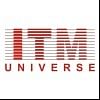





![Indian Institute of Technology, [IIT] Bombay](https://media.getmyuni.com/azure/college-image/small/indian-institute-of-technology-iit-bombay.jpg)

![Indian Institute of Technology, [IIT] Kanpur](https://media.getmyuni.com/azure/college-image/small/indian-institute-of-technology-iit-kanpur.jpg)
![Indian Institute of Technology, [IIT] Kharagpur](https://media.getmyuni.com/azure/college-image/small/indian-institute-of-technology-iit-kharagpur.jpg)






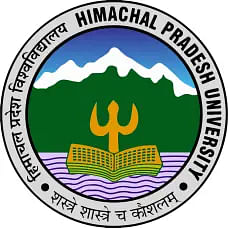








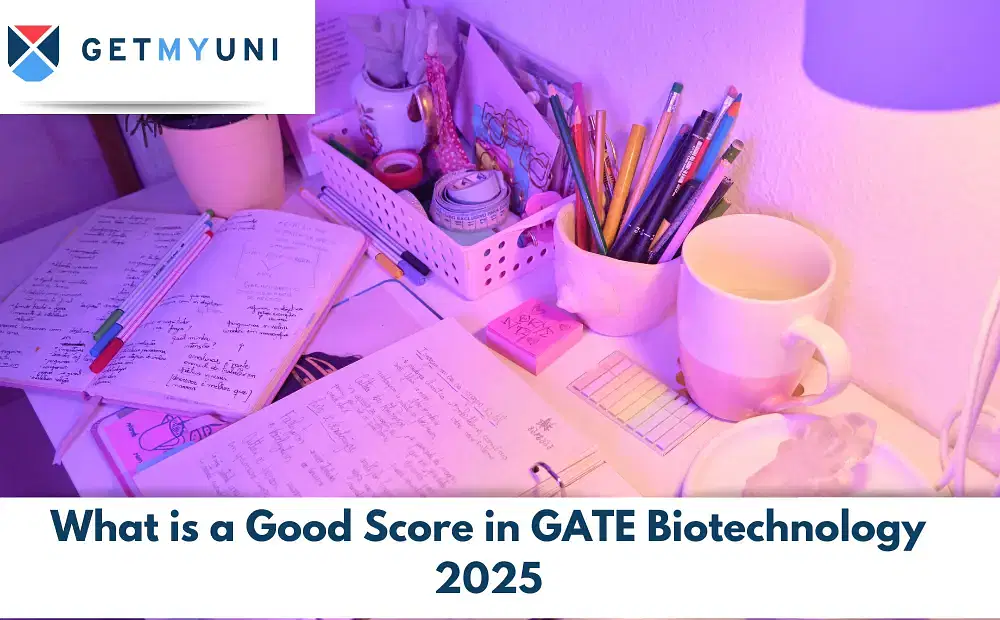



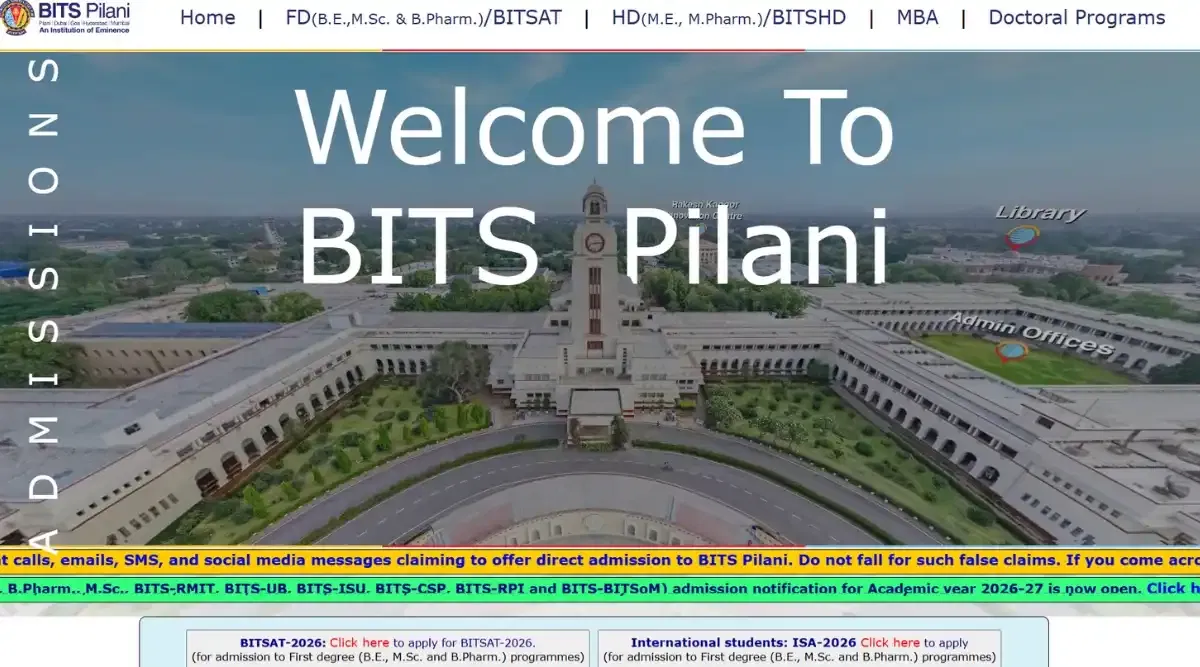


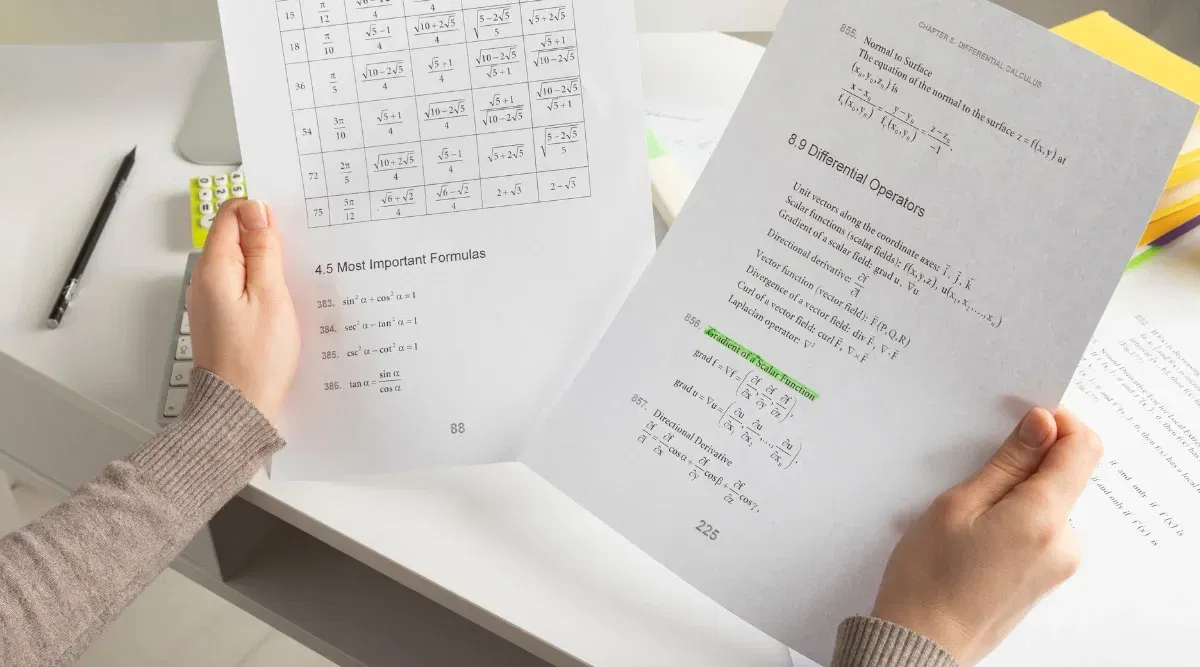

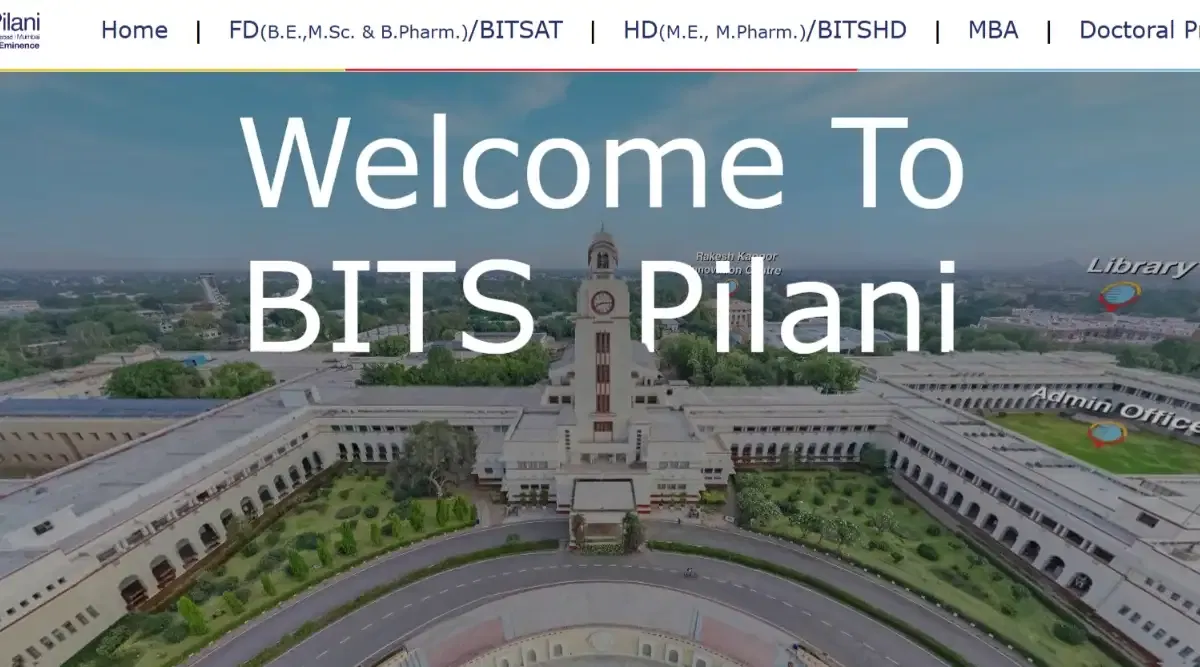




POST YOUR COMMENT